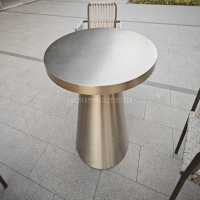Welcome to the website for landscape facilities products and knowledge.
How does the table’s design ensure it remains level on sloped or uneven surfaces?
Modern table designs incorporate several sophisticated engineering solutions to ensure stability on sloped or uneven surfaces. The most common approach involves adjustable legs equipped with precision mechanisms that can be individually extended or retracted. These legs typically feature threaded components or telescopic sections that lock securely into position, allowing users to customize the height of each corner independently. This compensates for ground irregularities ranging from gentle slopes to more challenging terrain.
Many contemporary designs integrate self-balancing systems using weighted bases or gyroscopic principles that automatically distribute weight evenly across all contact points. The materials used also contribute significantly to stability - tables with broader, weighted bases create a lower center of gravity that resists tipping. Some manufacturers incorporate flexible joint systems that allow the table surface to tilt slightly while maintaining structural integrity.
For outdoor applications, manufacturers often employ tripod-style leg configurations or stabilization feet with increased surface area. These designs utilize physics principles to maximize contact with the ground while minimizing wobble. High-end models may feature hydraulic or pneumatic leveling systems that respond dynamically to shifting weights and surface conditions. The combination of these mechanical innovations ensures that modern tables provide reliable performance whether placed on uneven patio stones, grassy slopes, or other challenging surfaces, making them ideal for outdoor dining, camping, and events where perfect flatness can't be guaranteed.
Related search:

Recommendation
Outdoor Metal Table - Classic Outdoor Furniture, Stainless Steel Table, Durable and Reliable